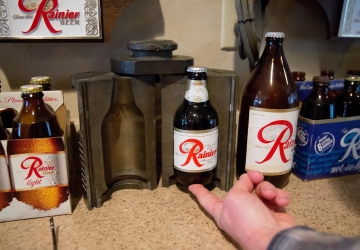

There really is too much to appreciate here but how about we give it a whirl this Sunday… They wanted to appreciate YOU, Billy Burke! Can we blame them really? You are the man who plays Bella’s pops Charlie AND you were Jack on My Boys, one of our personal faves. A drink, he notes, is a 5-ounce serving of wine, or a 12-ounce serving of 5 percent-alcohol beer.īut Klatsky is just as quick to warn against overdoing it, which can damage the liver and, in some cases, cause fatal alcohol poisoning.I took to the twitter-webs (one of your favorite places) to ask our lovely followers who we should appreciate this Sunday and we got the message loud and clear. He says that if you want to reap the heart-health benefits of drinking, consistency is key: two or three drinks per day for an average man, and one or two for a woman. Yet he agrees that "beer has more nutrients, often more calories, B vitamins. He adds that Dogfish Head, like many craft breweries, also makes lower-alcohol beers with about the same calorie counts as mainstream lagers.Īrthur Klatsky, a retired Kaiser Permanente doctor and a researcher of the health effects of alcohol consumption, doesn't favor any particular alcoholic beverage. Sam Calagione, founder of Dogfish Head Brewery, tells The Salt that his philosophy on drinking such hefty beers is that the higher alcohol content boosts flavor - which makes the extra calories worth it. That's about the same energy as you'd get from a cup of granola - or four glasses of wine. One bottle may contain more than 500 calories.

Right up there among the most calorie-packed beers is Dogfish Head's 120-Minute IPA, which contains 20 percent alcohol - twice that of Bigfoot. A 12-ounce bottle of 9.6 percent ABV Sierra Nevada Bigfoot Barleywine will contain roughly 300 calories, 200 of which come from the alcohol. Up the ABV, and your calories start to balloon. A 12-ounce serving of a 5 percent-alcohol beer has between 10 and 20 grams of carbs - or 40 to 80 extra calories. A standard 5-ounce glass of wine contains just 1 or 2 grams of carbohydrates. While Bamforth is correct that beer is lower in carbs compared with, say, bread, it has lots more carbs than wine. In addition, many of these beers - especially highly hopped, bitter beers - tend to be sweeter, with extra calories from carbs (which add another 4 calories per gram). Many imperial stouts, barley wines, IPAs, Belgian styles and bocks measure 8 or 9 percent alcohol by volume - or even much more. "But the brewers shot themselves in the foot when they came out with 'low-carb' beer, implying that everything else they made was 'high-carb,' " Bamforth says.Ĭalorie-counting, though, gets a lot trickier in the world of craft beers. Beer drinkers who are overweight or obese are probably eating too much greasy pub grub and spending too many hours on the bar stool, he notes.
/cdn.vox-cdn.com/uploads/chorus_image/image/38863110/rainier.0.jpg)
Those calories can add up after a few bottles, with about 150 calories in your typical, 12-ounce serving of 5 percent-alcohol beer.īamforth argues that we shouldn't blame big bellies on beer.

So what about the dreaded beer belly? After all, alcohol contains about 7 calories per gram (almost as much as fat, which contains 9 calories per gram). What's more, Bamforth notes, craft beer should not be perceived as healthier than mass-produced lagers, which he says also tend to be made with natural, grain-based sugars and few, if any, synthetic additives. That is, a pint of Guinness is roughly equivalent to a Budweiser lager. "With beer, more of actually get into the body," he says, though beers can have varying levels of them.Īnd despite a common misconception, color has little or no bearing on a beer's nutritional content, Bamforth says. He adds that the antioxidants in wine may also not be as readily absorbed as the ones in beer - compounds like f erulic acid.


 0 kommentar(er)
0 kommentar(er)
